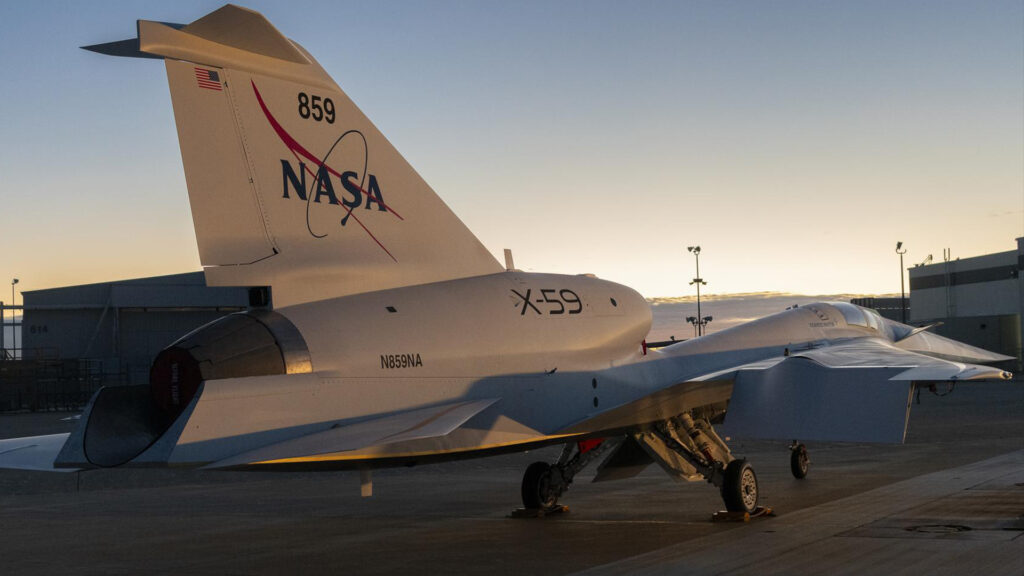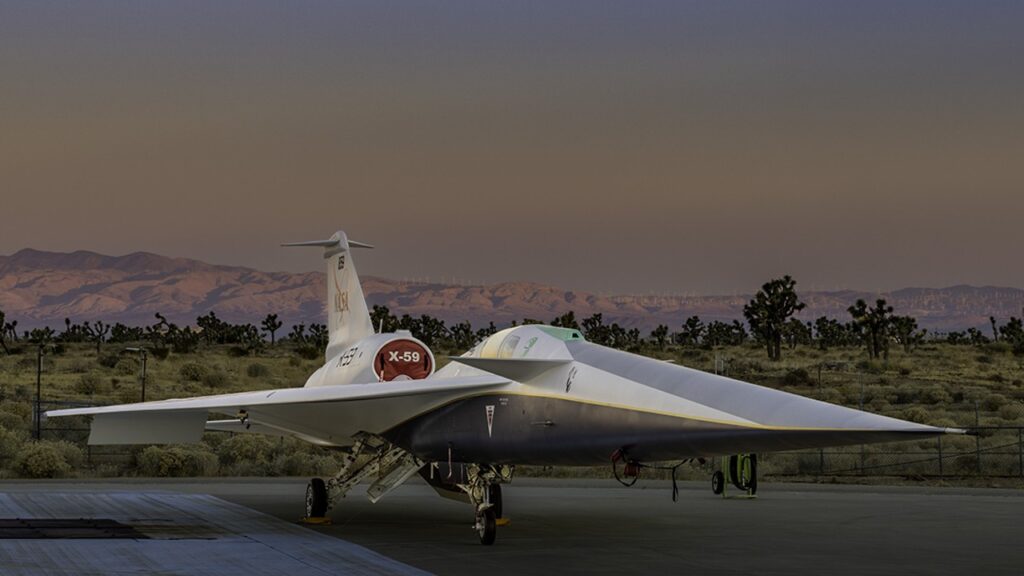
On January 12, NASA and Lockheed Martin officially unveiled the X-59 experimental quiet supersonic aircraft. Its main difference is the absence of a sound effect during supersonic flight.
With the help of the experimental aircraft, NASA plans to pave the way for a new generation of commercial supersonic aircraft.
“This is a great achievement that was only made possible by the hard work and ingenuity of NASA and the entire X-59 team,” said NASA Deputy Administrator Pam Melroy at the ceremony. The NASA X-59 will help change the way we travel, bringing us closer together in much less time.”
Melroy and other officials showed off the aircraft during a ceremony organized by Lockheed Martin’s main contractor Skunk Works at its Palmdale, California, plant.
According to the plans, the X-59’s flight speed will be 1.4 times faster than sound, or 1488 km/h. The design, shape and technology will allow the aircraft to achieve this speed while generating quieter sound impacts. The X-59’s slender, tapered nose is almost a third of its length and breaks up the shock waves that would normally result in a supersonic aircraft’s sonic boom.
After the deployment is complete, the Quesst team will move on to the next steps in preparation for the first flight: testing of integrated systems, engine startup, and steering testing for the X-59.

The aircraft is due to take off for the first time later this year, followed by its first quiet supersonic flight. The Quesst team will conduct several flight tests of the aircraft at Skunk Works before transferring it to NASA’s Armstrong Flight Research Center in Edwards, California, which will serve as the base of operations.

After the flight tests are completed, NASA will launch the aircraft over several selected US cities, collecting information about the sound generated by the X-59 and how people perceive it. NASA will provide this data to the Federal Aviation Administration and international regulators.

